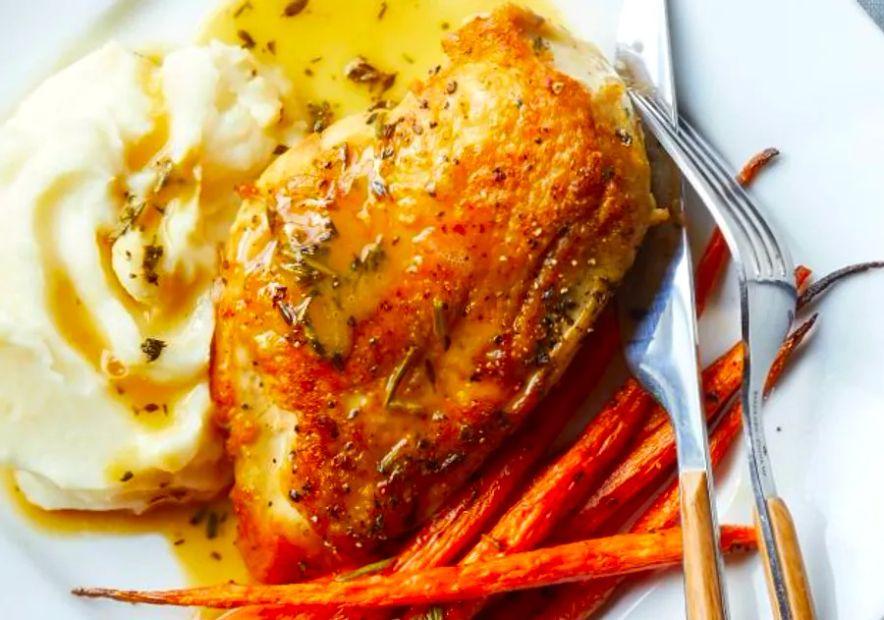6 Common Mistakes That Leave Chicken Breasts Dry and Flavorless

Chicken breasts often get a bad rap, overshadowed by their juicier, more flavorful cousins, the chicken thighs. Regarded as the bland, diet-friendly cut, chicken breasts can easily be dismissed as a dry disappointment. However, when prepared correctly, they can be incredibly tender and a fantastic canvas for all sorts of bold flavors. If your chicken breasts aren't turning out the way you'd hoped, it's likely due to some common pitfalls. Let’s take a look at what might be going wrong.
Not Thawing Them in Time
We've all been there: you promised to thaw the chicken for dinner, but then life gets in the way, and suddenly it's 6 p.m., and you're frantically searching for a solution. With larger, thicker chicken breasts, a quick thaw just won't do. You can't expect to defrost them properly in an hour, no matter how hard you try.
The best approach is to take the chicken out the night before and let it thaw slowly in the fridge. If you're short on time, you can submerge it in cold water for a few hours. Trying to cook chicken that's still frozen in the center will lead to uneven cooking — and more often than not, you'll end up overcooking the thawed parts as you struggle to heat the frozen core.
Pro Tip: Allow Your Thawed Chicken to Rest at Room Temperature for 30 Minutes Before Cooking
Don’t Skip the Skin and Bones
When most people picture chicken breasts, they usually think boneless and skinless. But here's why you should consider bone-in, skin-on breasts instead. The bones and skin contribute an extra layer of flavor and moisture that’s missing from the boneless variety. Even if you prefer not to eat the skin, cooking with it on and removing it just before serving leads to a juicier, more flavorful result.
And save those bones! They’re perfect for making a rich, homemade stock.

You’re Skipping the Marinade
I get it, marinating chicken takes some planning ahead, but trust me, it’s worth it. If you can spare just a few minutes, or even better, a few hours, your chicken will be so much more flavorful. Try making a marinade with yogurt or olive oil, add your favorite spices, minced garlic, ginger, a bit of chili, and a squeeze of lemon or vinegar. Even just 15 minutes in the marinade can make a noticeable difference, but if you have the time, 24 hours is ideal. For a quicker marinade, try cutting the chicken into smaller pieces so more of the surface area gets coated.
You’re Not Using Enough Seasoning
You don’t need a complicated spice rack to make delicious chicken; sometimes simple is best. A solid seasoning of kosher salt and freshly cracked black pepper is all you need to bring out the flavor. If you're marinating your chicken, great — but even if you’re not, always make sure to season both sides generously with salt and pepper before cooking to avoid blandness.
You’re Overcooking Your Chicken
This is perhaps the most common mistake when cooking chicken breasts. While we definitely don’t want undercooked chicken, it’s easy to go too far in the other direction. The result is dry, rubbery chicken that’s hard to swallow. Unlike chicken thighs, which are more forgiving thanks to their higher fat content, chicken breasts don’t have that luxury. They can quickly turn tough and unpleasant if overcooked.
That’s why investing in a meat thermometer is such a smart move. It helps ensure your chicken reaches the perfect temperature (165°F) without going over. Whether you're grilling, roasting, poaching, or pan-frying, it’s an essential tool. Remember, carry-over cooking will continue after you remove the chicken from heat, so it’s best to pull it off just before it hits the target temperature.
As you use your thermometer more often, you’ll start picking up on visual and sensory clues to gauge when your chicken is done. But if you do end up overcooking it, don't panic. The trick is to add moisture back in. Try making a rich buttery pan sauce or a creamy yogurt sauce to revive the chicken’s tenderness.
You’re Not Allowing the Chicken to Rest
As mentioned earlier, carry-over cooking is a crucial step. After your chicken breasts finish cooking, let them rest for at least half the cooking time before slicing into them. This simple step ensures your chicken stays juicy, flavorful, and fully cooked. Trust me, those extra minutes of patience make a huge difference — every single time.

1

2

3

4

5
Evaluation :
5/5